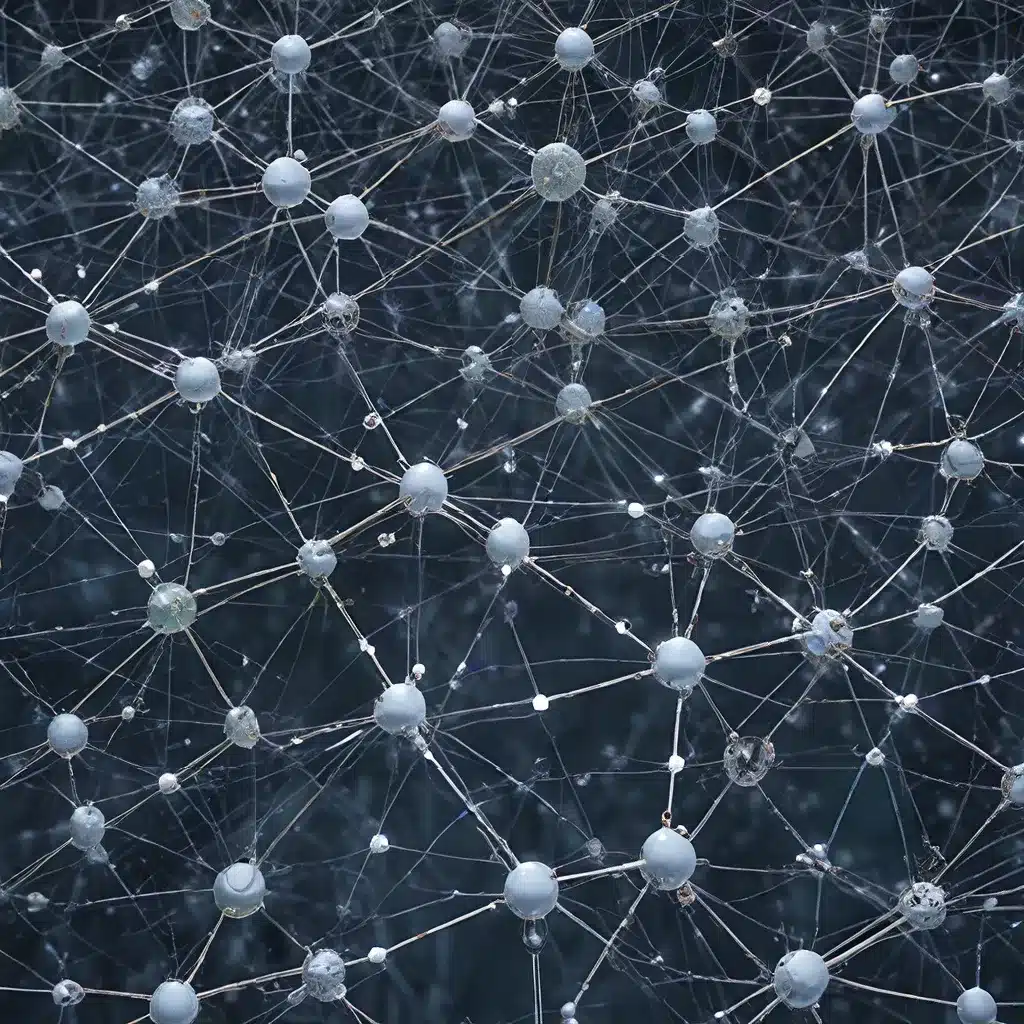
The Rise of Sensor Networks and IoT
Sensor networks and the Internet of Things (IoT) have revolutionized the way we interact with our physical environment. These technologies have enabled the seamless integration of sensors, connectivity, and data processing to create intelligent systems that can monitor, analyze, and respond to a wide range of real-world phenomena. From smart cities and industrial automation to environmental monitoring and healthcare applications, the impact of these advancements is undeniable.
As the complexity and scale of sensor networks continue to grow, the need for efficient and resilient algorithms to manage these distributed systems has become increasingly critical. Distributed algorithms, which rely on coordinated decision-making among multiple nodes, offer a promising solution to address the challenges posed by the dynamic and heterogeneous nature of sensor networks.
Enhancing Resilience through Distributed Algorithms
One of the key advantages of distributed algorithms in sensor networks is their inherent resilience. Traditional centralized approaches often suffer from single points of failure, where the loss or malfunction of a central node can bring down the entire system. In contrast, distributed algorithms leverage the redundancy and autonomy of multiple nodes to maintain system integrity even in the face of disruptions or node failures.
Research has shown that distributed consensus algorithms, such as Raft and Paxos, can enable sensor nodes to agree on a common state and coordinate their actions without relying on a central authority. This decentralized approach enhances fault tolerance and adaptability, ensuring that the network can self-organize and maintain functionality even when individual nodes experience issues.
Furthermore, distributed algorithms can optimize resource utilization and energy management within sensor networks. By dynamically allocating tasks and load-balancing across nodes, these algorithms can extend the operational lifespan of battery-powered sensors and reduce the overall energy consumption of the network. This is particularly crucial in remote or inaccessible deployments where maintenance and battery replacement can be challenging.
Scaling Sensor Networks with Distributed Algorithms
As sensor networks continue to grow in scale and complexity, the traditional centralized approaches to data processing and decision-making become increasingly inefficient and unscalable. Distributed algorithms offer a solution to this challenge by leveraging the collective processing power and decision-making capabilities of multiple nodes.
Researchers have demonstrated that distributed clustering algorithms, such as LEACH and HEED, can organize sensor nodes into hierarchical groups or clusters, each with a designated leader responsible for data aggregation and communication with other clusters. This hierarchical structure allows for more efficient data routing, reduced network traffic, and improved scalability as the network size increases.
Similarly, distributed task allocation algorithms, such as MATB and CBBA, can dynamically assign sensing, processing, and communication tasks to sensor nodes based on their capabilities and available resources. This decentralized approach to task management helps to balance the workload across the network, optimize resource utilization, and enhance the overall system performance as the number of sensors grows.
Ensuring Security in Sensor-Driven IoT
As sensor networks and IoT become more pervasive, the security of these systems has become a growing concern. Distributed algorithms can play a crucial role in enhancing the security of sensor-driven decision-making processes.
Studies have demonstrated that distributed authentication protocols, such as BDDH and ECDSA, can establish secure communication between sensor nodes and prevent unauthorized access to the network. These decentralized approaches eliminate the need for a central authority, making the system less vulnerable to single points of failure and targeted attacks.
Moreover, distributed anomaly detection algorithms, which monitor the behavior of individual nodes and the overall network, can identify and mitigate security threats in real-time. By leveraging the collective intelligence of multiple sensors, these algorithms can detect and respond to suspicious activities, network intrusions, and data manipulation attempts more effectively than centralized systems.
Energy-Efficient Sensor Networks through Distributed Algorithms
One of the significant challenges in sensor network design is energy management. Sensor nodes, often battery-powered or energy-harvesting, must operate efficiently to extend the network’s lifetime and minimize maintenance costs.
Distributed algorithms can play a crucial role in optimizing energy consumption within sensor networks. Distributed duty-cycling algorithms, such as S-MAC and T-MAC, can coordinate the sleep/wake cycles of sensor nodes, reducing their energy expenditure while maintaining network connectivity and responsiveness.
Similarly, distributed power management algorithms, like LEACH and HEED, can dynamically select cluster heads and routes based on the remaining energy levels of sensor nodes. This load-balancing approach helps to extend the lifetime of the entire network by avoiding the premature depletion of high-energy nodes**.
Conclusion: The Future of Sensor-Driven Decision-Making
As the demand for intelligent and responsive sensor networks continues to grow, the role of distributed algorithms in enhancing resilience, scalability, security, and energy efficiency will become increasingly crucial.
By leveraging the collective processing power, decision-making capabilities, and redundancy of multiple sensor nodes, distributed algorithms can unlock the full potential of sensor-driven IoT applications, transforming the way we interact with our physical environment and solve complex real-world challenges.
As the field of sensor networks and IoT continues to evolve, the integration of distributed algorithms will play a pivotal role in shaping the future of intelligent and adaptable sensor-driven systems.